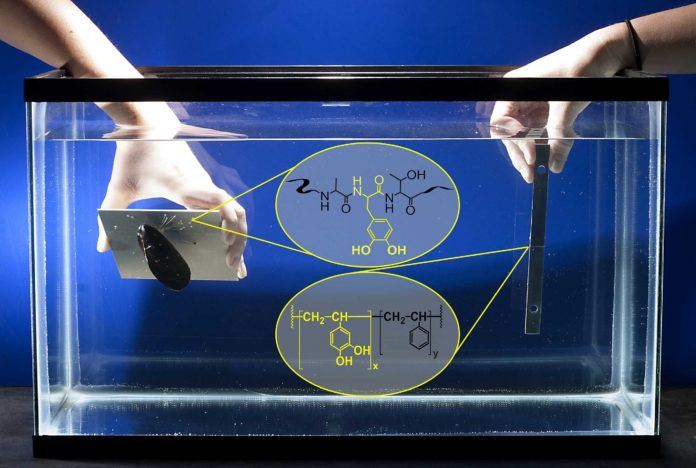With the special applications, adhesives in bonding technology are used to bond almost any desired combination of materials with each other. But the disadvantage of these adhesives that they are terrible at wet bonding. So, to bind material under harsh environments, scientists have developed biomimetic glue.
Developed by the scientists from the Purdue University, this biomimetic glue can work under water. As scientists noted, it is modeled after those created by shellfish to stick to surfaces. And, it is even stronger than many commercial types of glue created for the purpose.
Scientists compared the glue with five other types of glue involved in the study. They found that this biomimetic glue can do 10 times better when bonding wood, aluminum and even with Teflon.
Scientists said, “It is the only adhesive of those tested that worked with wood and far out-performed the other adhesives when used to join Teflon.”
There are the proteins present in the glue that consist the amino acid DOPA. This amino acid provides strength and adhesion to glue. Scientists added this chemistry of mussel proteins into a biomimetic polymer called Poly(catechol-styrene). And by harnessing the compounds called catechols, scientists create this new adhesive.
Assistant professor Jonathan Wilker said, “We are focusing on catechols given that the animals use this type of chemistry so successfully. Poly(catechol-styrene) is looking to be, possibly, one of the strongest underwater adhesives found to date.”
“While most adhesives interact with water instead of sticking to surfaces. The catechol groups may have a special talent for “drilling down” through surface waters to bind onto surfaces.”
The study also reveals the important aspects of mussel adhesion. It manages its attachment within their wet and salty environment. In addition, it also proves as 17 times stronger than the natural adhesive produced by mussels.
Wilker said, “We have shown that this adhesive system works quite well within controlled laboratory conditions. In the future, we want to move on to more practical applications in the real world.”
